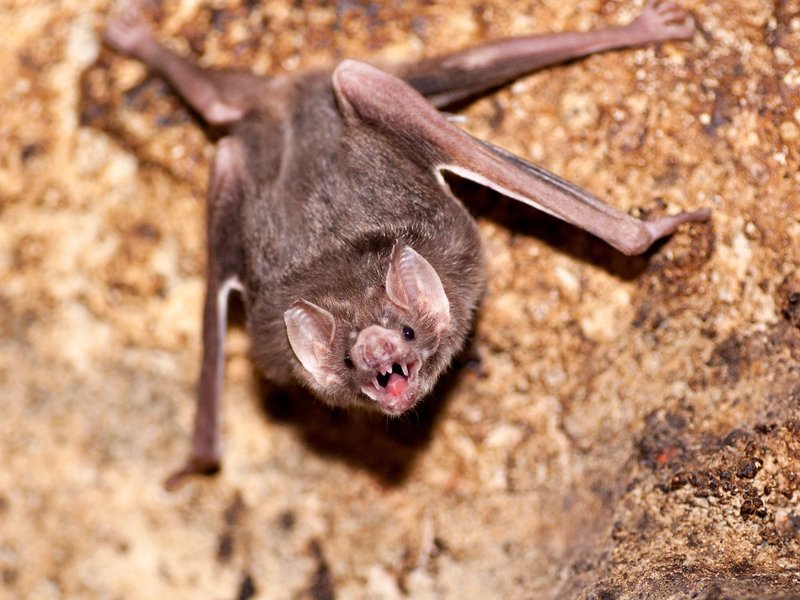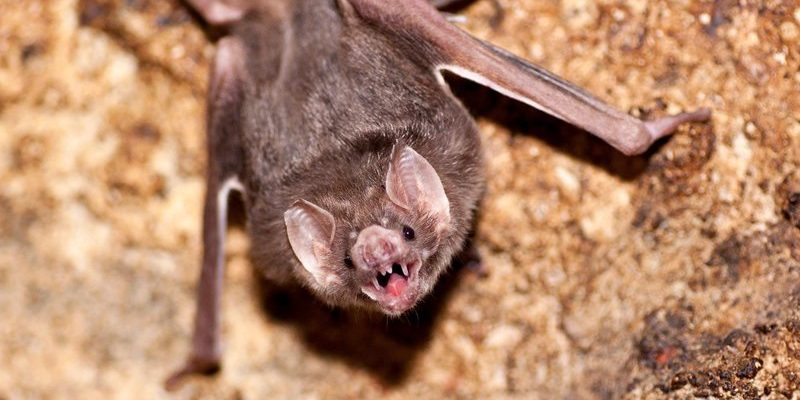
Vampire bats are a bit different from their fellow bat species. Instead of munching on fruits or insects, they have a rather unusual diet: blood. Yes, you read that right! They primarily feed on the blood of other animals, which might sound gruesome, but it’s a key part of their survival. You might be wondering how these bats manage to thrive in such harsh conditions, and the answer lies in their incredible adaptations and social behaviors. Let’s dive into the amazing world of vampire bats and see how they make it work.
The Irrational Fear of Vampire Bats
A lot of people have a deep-seated fear of vampire bats, often due to movies and folklore. Sure, they have those sharp teeth and a penchant for blood, but here’s the thing—these bats play a vital role in their ecosystem. Rather than swooping down on unsuspecting humans, they focus on animals like cows and horses.
Vampire bats have a specific social structure that helps them survive. They live in groups and often share food among themselves. This is especially crucial during tough times when some bats might not find enough to eat. Sharing blood meals strengthens their relationships and promotes survival. Think of it like a close-knit community that looks out for one another. If one bat is successful in feeding, it can help keep the entire group healthy.
On another note, let’s not forget the misunderstanding surrounding their feeding habits. Vampire bats don’t suck blood like you might think; they make tiny incisions in the skin of their host, allowing them to lap up the blood. Their saliva even contains a natural anticoagulant, which keeps the blood flowing. Oddly enough, these adaptations have made them uniquely suited to make the most out of their harsh environments, allowing them to thrive where others might fail.
Adaptations for Survival
Vampire bats have developed several adaptations that give them the upper hand in their harsh habitats. One of the most impressive features is their ability to regulate body temperature. Unlike some animals that hibernate or migrate, vampire bats can withstand significant temperature fluctuations. This ability allows them to remain active and search for food even when conditions aren’t ideal.
Their specialized teeth and tongues are another crucial adaptation. The teeth are sharp enough to make a quick incision, while their tongues have evolved to lap up blood efficiently. This is a vital skill, especially when they are pursuing hosts in the darkness of the night. You might think it’s amazing how their bodies have evolved this way, but it’s all about survival in the harsh environments they call home.
Another fascinating adaptation is their sense of heat. Vampire bats can detect body heat, helping them locate warm-blooded animals from a distance. This keen sense allows them to hone in on potential meals without alerting their prey. Imagine walking in a dark room and being able to pinpoint where the warm spots are—it gives them a distinct advantage when they’re out hunting at night.
Social Behaviors and Cooperation
Vampire bats are not just solitary creatures; they thrive on social interactions. Their social structures are tightly knit, with bats often roosting in groups of several dozen. This social approach has its benefits, especially when it comes to finding food. When one bat discovers a good source of blood, it can share with its roost-mates, allowing everyone to thrive.
This behavior highlights their cooperative feeding habits. When a bat feeds successfully, it often regurgitates some of the blood for its companions. This act of sharing isn’t just about kindness; it’s a survival strategy. In harsh environments where food can be scarce, helping out a fellow bat might just ensure that you have someone to rely on during tough times.
Another interesting point is that these bats can recognize each other’s calls and even remember past interactions. This helps them form lasting bonds and promotes a sense of community. Just think about it: if you know who your friends are, you’re more likely to help them out when they need it the most. It’s a clever survival strategy that reinforces their community and keeps them healthy.
Feeding Mechanisms and Food Sources
Feeding is the heart of vampire bat survival, and their methods are quite fascinating. Instead of actively hunting like wolves, vampire bats rely on stealth and precision. They typically feed at night and target large mammals, such as cattle or horses. Their feeding time is strategically chosen to take advantage of the host’s natural resting periods, ensuring they remain undetected.
The technique they use is pretty crafty. They land quietly on their host and use their sharp teeth to make a small cut. Interestingly, they don’t just consume the blood; they also seem to have an understanding of which areas are less sensitive and more accessible. This acute awareness is critical for evading detection while feeding.
Moreover, their saliva contains an anticoagulant called *draculin*, which prevents blood from clotting. This allows them to feed more easily without interruption. Can you imagine having a built-in tool that makes your job easier? It’s fascinating how nature has equipped them with such specialized mechanisms to thrive where food scarcity is a significant concern.
Challenges of Harsh Environments
While vampire bats have some impressive adaptations, they also face numerous challenges in harsh environments. Changes in climate, habitat loss, and even agricultural practices can make it harder for them to find food and roosting sites. For instance, when cattle are moved away from their natural habitats or when farmers implement measures to keep bats away, the bats can struggle to find a meal.
These challenges can lead to increased competition among bats, making social cooperation even more critical. Bats that are good at sharing and maintaining social bonds are often more successful in finding food during tough times. You might consider it a survival of the friendliest!
Moreover, health issues such as disease can spread rapidly within their roosts. Bats are known carriers of certain viruses, which can become problematic in close quarters. It’s a harsh reality for these creatures, as their social structures, while beneficial, can also contribute to the rapid spread of illness.
Conservation and Future Outlook
As fascinating as vampire bats are, they face threats that could impact their populations. Conservation efforts are essential to ensure their survival because, let’s face it, these creatures play a role in the ecosystem that shouldn’t be overlooked. Without them, the balance in their habitats could be disrupted, affecting both plant and animal life.
Efforts are underway in various regions to focus on habitat preservation and understanding their role in the ecosystem better. Local farmers are often encouraged to adopt practices that minimize human-wildlife conflict. This can help mitigate negative perceptions of vampire bats and highlight their importance in maintaining healthy ecosystems.
Education is vital too. By providing information about vampire bats, we can help dispel myths and misunderstandings. After all, knowledge can lead to better conservation strategies. So the next time you hear about these bats, think of them not as villains but as remarkable survivors of nature, bravely navigating the challenges of their environment.
In closing, the world of vampire bats is a testament to evolution’s creativity. They’ve developed unique strategies and social behaviors that allow them to thrive in harsh environments. It’s a wild story of survival that shows just how resilient nature can be. So, the next time you find yourself pondering about these intriguing creatures, remember their adaptability and the important role they play in our world.

